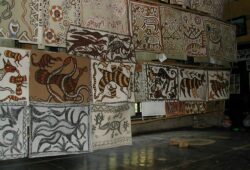The Elegance of Watercolour Horse Painting
 Posted On
Posted On
Watercolour painting is a captivating art form that has been cherished for centuries, known for its delicate, translucent qualities that capture the essence of subjects in a unique and ethereal manner. One subject that has frequently graced the canvas in watercolour is the majestic horse. In this article, we will explore the mesmerizing world of watercolour horse painting, delving into its history, techniques, and the profound emotions it evokes.
A Brief History
Watercolour painting as an art form has a rich history dating back to ancient civilizations, but it gained significant popularity in Europe during the Renaissance and Baroque periods. It wasn’t until the 18th century, however, that watercolours started to be used as a standalone medium for artistic expression. Artists like J.M.W. Turner and John Constable contributed to the growing admiration for watercolour as a legitimate art form.
Horses have also held a special place in the world of art for centuries. They symbolize strength, freedom, and grace. They have been depicted in various art forms, but watercolour offers a unique way to capture the fluidity and elegance of these magnificent creatures.
Techniques in Watercolour Horse Painting
Watercolour painting is characterized by its translucent layers and the way the colours blend and flow into one another. To capture the beauty of a horse, artists use various techniques to create texture, depth, and movement. Here are some of the techniques commonly employed:
Wet-on-Wet: This technique involves applying wet paint onto a wet surface, allowing colours to blend seamlessly. It’s ideal for creating soft backgrounds and capturing the horse’s environment.
Dry Brushing: Artists use this technique to add fine details and texture to their horse paintings. By using a nearly dry brush, they can achieve delicate strokes and emphasize specific features of the horse.
Lifting: Watercolour artists can lift off pigment using a clean, wet brush or a tissue paper, creating highlights and adding depth to their horse paintings.
Layering: Layering multiple washes of colour allows artists to build up the richness and complexity of the horse’s coat, capturing its unique colours and patterns.
Negative Painting: This technique involves painting around the subject, leaving it unpainted or in light washes, and then defining the subject by painting the background. It creates a striking contrast and highlights the horse’s form.
Emotions and Symbolism
Watercolour horse paintings evoke a wide range of emotions. The graceful movements of a horse, the play of light on its mane, and the intensity in its eyes can convey feelings of freedom, strength, and even vulnerability. These artworks often symbolize the connection between humans and nature, as horses have been companions and partners in various aspects of our history.
Additionally, watercolour horse paintings can serve as a metaphor for life’s journey. The wild spirit of a running horse or the calm strength of a grazing one can inspire viewers to reflect on their own paths and the beauty found in every step of the journey.
Watercolour horse painting is a mesmerizing art form that combines the delicacy of watercolours with the majesty of horses. Its history, techniques, and emotional resonance make it a cherished and timeless genre of art. The way watercolour captures the essence of these magnificent creatures is nothing short of magical, allowing viewers to connect with the grace and power of horses on a deeply emotional level. Whether you’re an artist or an art enthusiast, exploring the world of watercolour horse painting is a journey worth taking.



